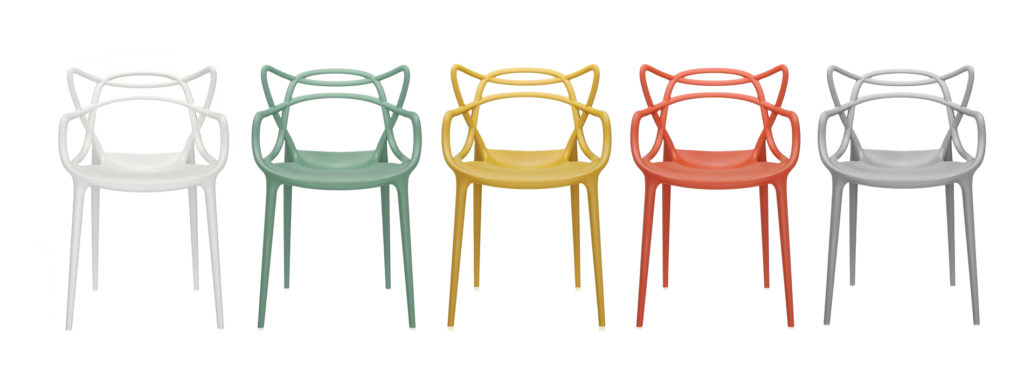Philippe Starck and Eugeni Quitllet’s Masters Chair is one of the world’s most celebrated designs. As part of the Heal’s Icons series, we delved a little deeper to discover the history of this iconic design.
Behind the design
In 2005, Philippe Starck designed the Masters Chair in collaboration with Catalan designer Eugeni Quitllet. The iconic chair boasts the innovative features and detailing the industry has come to expect from a Starck design, and is consequently a standout piece in the Heal’s collection.

This contemporary chair is a powerful tribute to three iconic chair silhouettes. Its shape re-reads and re-interprets Arne Jacobsen’s Series 7, Charles and Ray Eames’ Eiffel Chair and Eero Saarinen’s Tulip Chair. Individual elements from these three chairs are interwoven to create a unique hybrid design that fuses classic and contemporary design.
The Masters Chair is renowned across the globe and, in addition to winning the 2013 Red Dot Design Award, received the prestigious Good Design Award from the Chicago Athenaeum in 2010.

The lightweight, stackable design is crafted from moulded, ultra-strong polypropylene that allows it to be used inside and outdoors. Its ergonomically designed backrest and comfortably curved seat mean it’s the perfect chair for dinging spaces and offices alike.
About the designer
French designer Philippe Starck is renowned for using innovative and unusual materials to create his statement-making designs. Throughout the course of his career, Starck has designed over 10,000 pieces of furniture, buildings and interiors.
“We were not born today. We had some great predecessors. The Masters Chair brings to mind the lines of three great masters and three great masterpieces. With them all together, they create a new product, a new project, a reflection of our new society.”
Philippe Starck
The belief that clever design is perfectly poised to change the way we live drives the thought process for each furniture and lighting piece. Furthermore, Starck passionately believes design can improve quality of life for a wide audience, rather than just the elite few. As such, he combines an array of materials to create versatile designs that can be used in a multitude of places.
Included in his repertoire are designs such as the Ghost Chair, the KTribe Lamp and the Dr Yes Armchair. He is also the brains behind iconic hotels and restaurants, such as the anthropomorphic building Nani Nani in Tokyo.

